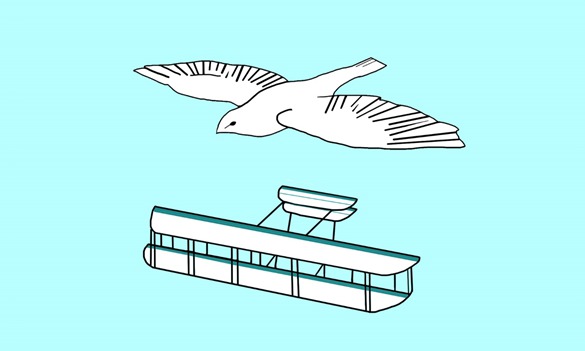Brief
SciToons
Understanding Science Through Animation and Storytelling Pathways
Connected Science Learning October-December 2017 (Volume 1, Issue 4)
By Oludurotimi Adetunji

Brown University’s Science Cartoons (SciToons) series makes science fun, engaging, and easier to understand through the captivating power of storytelling and animation.
Brown University’s four- to five-minute Science Cartoons (SciToons) make science compelling and accessible to the general public. There are already more than a dozen SciToons available on a wide range of topics, including climate models, conductive polymers, graphene, echolocation, the human microbiome, solar energy, and design inspired by nature. Collectively, these videos have been viewed more than 250,000 times. SciToons’ popularity as a source of science education continues to grow through YouTube, Twitter, Instagram, and other websites. SciToons have been used in classrooms to clarify concepts, stimulate discussion, and prepare students for visits with scientists. They have also been used by informal educators as an educational tool during presentations of scientific research and concepts to the public.
Behind the scenes
SciToons is a collaboration among Brown University students and faculty. The SciToons creation teams are made up of both science, technology, engineering, and mathematics (STEM) experts and novices (individuals with little or no STEM training). They work together on the cartoons’ scripts and illustrations, which are converted to storyboards before being animated and narrated.
A narrative hook (something that grabs and maintains the audience’s interest) is also a key part of the SciToons’ development. For example, the Design Inspired by Nature SciToon began with this narrative hook: “What if we told you that the most powerful laboratory in the world doesn’t have any microscopes, safety goggles, or walls?” The video introduces nature as the laboratory and shares how inspiration from the sky led to technological advancement in aviation design.
The video also discusses how inspiration from a glass sea sponge at the bottom of the ocean (the Venus’s flower basket) led to new insights into structural strength and new research directions. The sea sponge uses a network of hairlike fibers called spicules to hold itself still on the soft ocean floor. Each spicule has a solid core encircled by cylinders that get thinner as they move farther away from its center. This means that the spicule’s shape must be strong and could help engineers build stronger structures with cheap and environmentally friendly materials.
Oludurotimi O. Adetunji (oludurotimi_adetunji@brown.edu) is associate dean of the College for Undergraduate Research and Inclusive Science, adjunct assistant professor of physics, and executive producer of SciToons at Brown University in Providence, Rhode Island.


